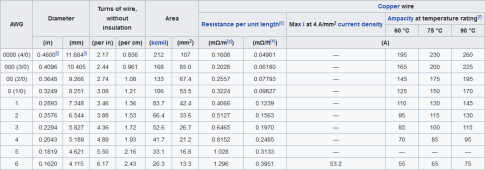Hi, complete beginner here. We bought a holiday cabin that has an old existing solar system in place, which we would pretty much like to rip out and start anew.
Our required loads are quite low, and we're only there roughly 2 weekends per month, perhaps longer in the summer.
- Water pump ~15 mins per day. (Not sure on the watt load of this)
- LED lights
- USB WIFI router (preferably kept on all the time)
- Occasional phone charging
We're planning to build a system similar to Will Prose's 24v system: https://www.mobile-solarpower.com/2000-watt-24v-solar-system.html
2x 12v 100AH Ampere Time Batteries in series for 24v 200AH
Victron 100/50 MPPT charge controller
- 60Amp circuit breaker
Victron Smartshunt
24v 2000w Giandel Inverter
- 125Amp fuse connected close to the battery's positive
12/24V USB Car charger
2x 150Amp Bus bars
24V to 12V step down and 12V fuse block is not needed yet, might add it later when we start hooking up lights to this.
We'll have a gas generator for emergencies.
We plan to use a RaspberryPI via VE Direct and a USB router for remote connection via WIFI and internet.
So far after plenty of research we've come up with the following wiring and fuse requirements.

Location:
Sweden, plenty of sun in the summer, barely any in winter.
Coldest in winter is a average of -1 to -5 degrees Celsius.
Summer ~ 25 degrees Celsius.
Questions:
Solar Panels
There aren't many options in Europe to source our own so we decided to go for this: ELERIX Solar panel Mono Half Cut 415Wp at 200EUR
Maximum Power (Pmax) is 415Wp
Cell technology is PERC Half Cut mono crystalline
Module efficiency is 21,25%
Open Circuit Voltage (Voc) is 41,6V
Number of Solar cells is 108
Color of the frame is Black
Weight is 19.5kg
Dimmensions are 1722 * 1134 * 35mm
Connection cable with MC4 connector
Temperature Characteristic
NMOT (Nominal Module
Operating Temperature) 45°C (±2°C)
Temperature Coefficient of PMAX - 0.36%/°C
Temperature Coefficient of UOC - 0.26%/°C
Temperature Coefficient of ISC 0.04%/°C
We plan to get 2 in series, so it works out to 830W 83.2V
Our required loads are quite low, and we're only there roughly 2 weekends per month, perhaps longer in the summer.
- Water pump ~15 mins per day. (Not sure on the watt load of this)
- LED lights
- USB WIFI router (preferably kept on all the time)
- Occasional phone charging
We're planning to build a system similar to Will Prose's 24v system: https://www.mobile-solarpower.com/2000-watt-24v-solar-system.html
2x 12v 100AH Ampere Time Batteries in series for 24v 200AH
Victron 100/50 MPPT charge controller
- 60Amp circuit breaker
Victron Smartshunt
24v 2000w Giandel Inverter
- 125Amp fuse connected close to the battery's positive
12/24V USB Car charger
2x 150Amp Bus bars
24V to 12V step down and 12V fuse block is not needed yet, might add it later when we start hooking up lights to this.
We'll have a gas generator for emergencies.
We plan to use a RaspberryPI via VE Direct and a USB router for remote connection via WIFI and internet.
So far after plenty of research we've come up with the following wiring and fuse requirements.

Location:
Sweden, plenty of sun in the summer, barely any in winter.
Coldest in winter is a average of -1 to -5 degrees Celsius.
Summer ~ 25 degrees Celsius.
Questions:
- Are the wire sizing accurate? (4awg between batteries and to inverter/ 6awg from bus bar to MPPT)
- Are the fuse size sufficient for the wire and load sizes (2000w inverter at 24v ~123A. Is a 125A fuse cutting it too close, and should I go for a 150A fuse)?
- I tried to search on how to connect USB outlets directly to batteries like this, but couldn't come up with much examples on the forum. Is getting a car/cigarette USB charger like this and just connecting it to the busbars fine? Since the wires they provide has fuses inside, I think I don't need to add my own fuse.
- Does the smartshunt need a fuse?
Solar Panels
There aren't many options in Europe to source our own so we decided to go for this: ELERIX Solar panel Mono Half Cut 415Wp at 200EUR
Maximum Power (Pmax) is 415Wp
Cell technology is PERC Half Cut mono crystalline
Module efficiency is 21,25%
Open Circuit Voltage (Voc) is 41,6V
Number of Solar cells is 108
Color of the frame is Black
Weight is 19.5kg
Dimmensions are 1722 * 1134 * 35mm
Connection cable with MC4 connector
Temperature Characteristic
NMOT (Nominal Module
Operating Temperature) 45°C (±2°C)
Temperature Coefficient of PMAX - 0.36%/°C
Temperature Coefficient of UOC - 0.26%/°C
Temperature Coefficient of ISC 0.04%/°C
We plan to get 2 in series, so it works out to 830W 83.2V
- Does these panels work for our system? The 83.2V seems well within the 100V limit of our Victron MPPT even if we account for cold weather.
- We would like the option to expand our system, to get 1-2 more solar panels. 1 more first to make up for the lack of sun in the winter that could be disconnected in the summer. - But this will then need to be connected in Parallel? Does a 2s1p config even work?
- Can our MPPT handle a 2s2p config? (4x415w = 1660w) (1660w/24v = 69A) 69A seems more than the 100/50 MPPT could handle.
- Side question, these panels (RISEN Tier 1 Solar Panel Mono HalfCut PERC 390Wp) are identical in price, but at 390W, doesn't that just mean it's worse off? Why would one choose this over the other?
Last edited:




